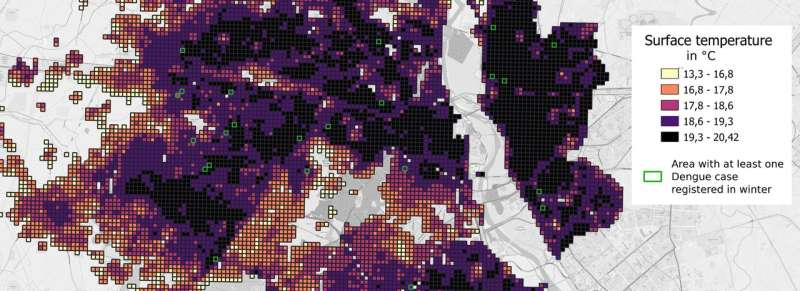flagyl drug

What if more inclusive urban planning for poor populations was key to fighting dengue fever? This is what researchers from the CNRS, buy generic xenical uk the Institut Pasteur and the Indian Council of Medical Research have demonstrated using a geographical approach applied to the greater city of Delhi (India). Their study is published in the journal PLOS Neglected Tropical Diseases on 11 February 2021.
Dengue is a viral disease with no specific treatment or vaccine and a potential threat to 3.5 billion people today—a number that could increase with the urbanization of tropical areas and global warming. The tiger mosquitoes that carry the disease are particularly well adapted to urban environments and their range is increasingly spreading toward temperate regions.
Since 1996, Delhi has been hit by a dengue epidemic every year between July and November. To find out where and how to take action to better combat these epidemics, a team of geographers, virologists, entomologists and epidemiologists studied their spread throughout this metropolis of 16.7 million inhabitants. Scientists targeted 18 neighborhoods in Delhi where they measured the abundance of mosquito larvae and looked for the presence of antibodies (a sign of past infection) in a portion of the inhabitants. By combining this field data with cases identified in hospitals, they were able to highlight the role of social and environmental factors in the spread of this emerging disease.
The first finding? Despite a lower mosquito density, affluent neighborhoods are almost as affected by dengue fever as disadvantaged neighborhoods, and more so than middle-class neighborhoods. Scientists explain this paradox by the importance of day-to-day mobility in the city: privileged and disadvantaged neighborhoods are now hyper-connected and share living spaces as much as viruses. Second: lack of access to running water is the major risk factor for dengue fever infection, more than poverty, although the two are often associated.
Indeed, the rare winter cases of dengue fever are found in disadvantaged and densely populated neighborhoods. A lack of running water forces inhabitants to store the water in tanks, which are ideal nesting places for mosquitoes, and the high density of these types of neighborhoods creates heat islands. Temperatures in these areas reach up to 15°C in January (10°C higher than in less densely populated areas), allowing mosquitoes to survive the winter and continue to spread the virus locally.
Source: Read Full Article
